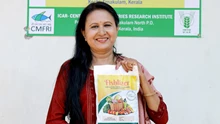
Italy grows over half of the rice produced in the European Union and is the only producer of risotto rice varieties such as Arborio and Carnaroli. The northern regions of Lombardy, around Milan, and Piedmont, near Turin, produce 94% of Italy's harvest.
According to Roberto Magnaghi, director general of Ente Nazionale Risi, a public rice research group, no more than 211,000 hectares of rice will be planted in 2023, the smallest area in 23 years. "Water is in short supply. All of us are looking up at the sky," he remarked. The forecast for 2023 is down 7,400 hectares from 2022 and 16,000 hectares from 2021. Coldiretti, an agricultural lobbyist, produced a similar forecast.
Magnaghi stated that the situation in Lombardy and Piedmont is much worse than it was in 2022, when crops were destroyed by drought and production was down 17% from the previous year. Production in Lombardy's Pavia province, noted for its risotto rice, plummeted 16%.
According to Andrea Toreti, an agriculture expert at the European Commission's Joint Research Centre, soil moisture levels have still not recovered from last year's drought, and current snowfall accumulation in the Italian Alps is lower than in 2022. "It will be difficult to make up the shortfall with spring rainfall," he said.
Scientists and environmental groups warned of Italian water shortages in January, following a dramatic decline in winter precipitation. On Tuesday, Prime Minister Giorgia Meloni informed parliament that she was working with regional and city authorities on a "national water plan" to upgrade infrastructure with new technologies and boost public awareness about the importance of water conservation.
Rice, which was introduced to Italy in the second half of the 15th century, is one of the most water-intensive crops, requiring between 3,000 and 10,000 litres of water per kilogramme of production, depending on variety and other factors. Farmers begin sowing in April, planting seeds in pools 30 to 40 cm deep. They must then be irrigated on a regular basis to keep the future sprouts moist.
Coldiretti's head of economics, Lorenzo Codogno, told Reuters that the company is urging the government to increase reservoir capacity, noting that Italy collects only 11% of its precipitation. With climate change causing more regular droughts, Italy is looking for additional ways to protect its rice industry.
The southern island of Sicily, which abandoned rice production a century ago, restarted it in 2016 with small-scale cultivations employing novel techniques that require significantly less water than those employed in the north. According to Magnaghi of Ente Nazionale Risi, research is also underway to develop new rice types that are more drought tolerant, although this is limited by European Union legislation that restricts genetically modified crops. "It takes years to generate new types using traditional methods," he said.
(Inputs taken from: Reuters)











